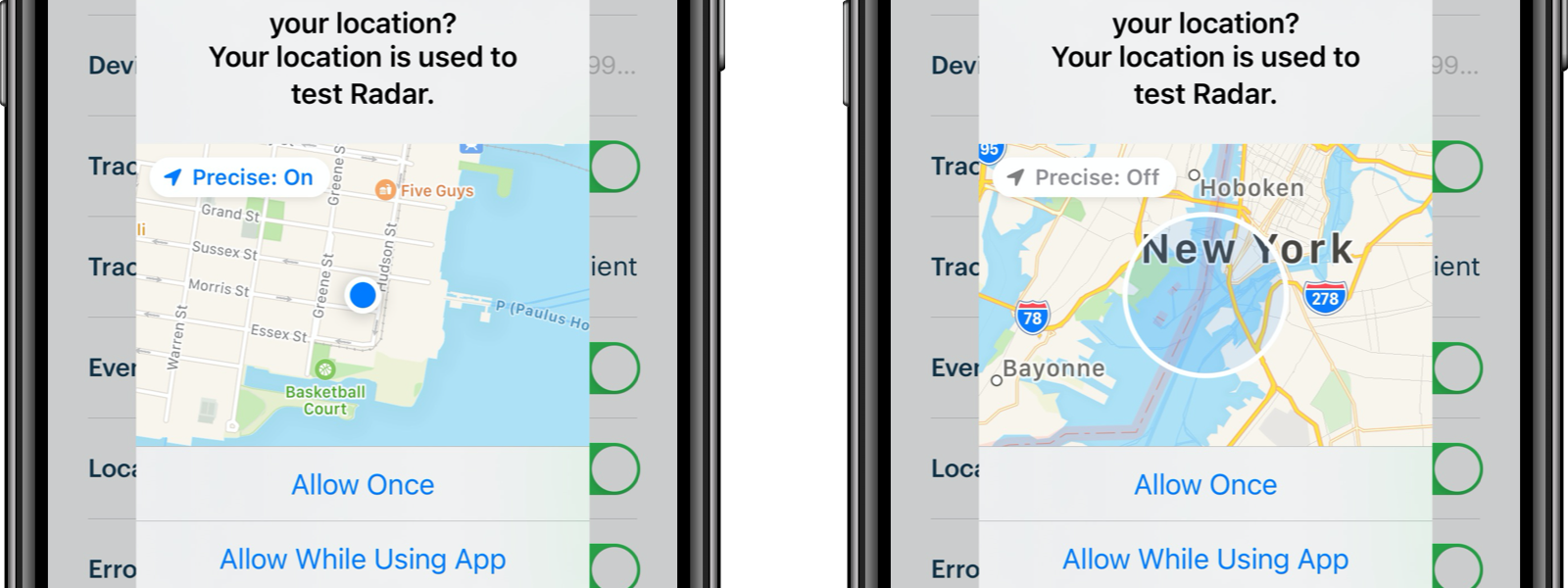
What Does Approximate Location Mean on iPhone?
iOS 14 gives users the power to decide whether an app can access precise or approximate location data. This can be done via Settings -> Privacy -> Location Services -> Precise Location.
Apps such as MapMik allow users to share an approximate location without disclosing their exact address, making it ideal for those who feel uncomfortable divulging their exact location.
Approximate location is based on nearby Wi-Fi hotspots and cell towers
iOS 14 allows users to opt for an approximate location rather than their actual device’s. Doing so, the system will calculate the closest Wi-Fi hotspots and cell towers it can access in order to determine a reliable estimate of location.
This form of location estimation is suitable for indoor environments, especially where WiFi network coverage is scarce. Unfortunately, it cannot accurately pinpoint exact location in outdoor locations with weak GPS signals or high hills and buildings with steep terrain.
An app can precisely pinpoint your location by scanning for Wi-Fi access points and cell towers near you, rather than simply using GPS alone. It has multiple radios in its device which scan around for these sources of data and use them to calculate position more precisely than a simple GPS signal ever could; additionally, this data is combined with all other sensor and network data it gathers.
Many mobile applications already incorporate location tracking as part of their functionality – some even provide a location meter or widget within the app. This feature estimates the closest known Wi-Fi access point your device can locate and is commonly available for both Android and iOS devices.
However, this approach isn’t perfect as the accuracy of the estimate depends on your environment. In places where it’s difficult to get a reliable GPS fix due to lack of satellite visibility or clear skies, this estimate may be inaccurate.
Another factor that may influence the accuracy of this estimate is your distance from a Wi-Fi access point or cell tower you are trying to locate. Generally, areas with more people connected via WiFi or cell service provide more precise locations than more isolated spots can.
Similar issues arise with cell towers: if there are too many in your vicinity, it can be difficult for GPS signals to be received accurately. That is why Apple is working on creating a crowdsourced database of tower locations so your iPhone has better chances of receiving an accurate location than using only GPS alone.
Additionally, some apps employ various methods of location tracking. This is often referred to as side-channel location tracking, since these use non-GPS source data such as network IP addresses or WiFi networks for reference.
Approximate location is based on your current location
Approximate location is the name for Apple’s technology to estimate your current location. It does this by using information gleaned from WiFi networks and nearby cell towers, such as your public IP address, map of nearby Wi-Fi hotspots, and even GPS signal strength – to give you an indication of where you are currently located.
Estimating distances can be useful for many things, like geocoding photos, finding your way back to where you left off in a song, and determining the location of an object in a game. It also makes it simpler for apps to send directions.
On your iPhone, the most accurate way to estimate your location is using its built-in GPS receiver. This method has remarkable precision (a few metres or so in ideal conditions), but it may take several minutes before your phone gets an accurate fix.
Alternatively, your iOS device can use hybrid positioning to estimate your location. This combines data from GPS, Wi-Fi and cell towers in order to provide the most precise reading possible. It works anywhere a device is able to connect to either a cell tower or Wi-Fi access point – including indoors and on rooftops.
The iPhone’s ability to approximate your location is one of the more impressive features Apple has built into iOS and Maps app. This handy little feature makes life much simpler by giving you quick answers without needing your phone out, plus it gives a sense of distance from friends when out and about. What’s even cooler? You have control over how much detail is displayed by the app!
Approximate location is based on your current position
Approximate location uses a combination of GPS, Cellular and Wi-Fi data to estimate your current position. This means that your iPhone can tell you where you are with various sources including indoors or in bad weather conditions.
This is an effective way to get an accurate location without spending money on a paid-for map or GPS navigation system, and it’s also suitable for apps that don’t require the highest accuracy. For instance, Maps app users can utilize this feature to display an approximate location to friends if you don’t intend on providing them with an exact address.
You can disable precise location access for any app by turning off the Precise Location permission in Settings > Privacy. To do this, open Settings and choose your desired app; then toggle off Precise Location until it turns gray and stops showing your precise location. Doing this keeps your personal data safe by only sharing an approximate location with friends, while also protecting your privacy while out and about.